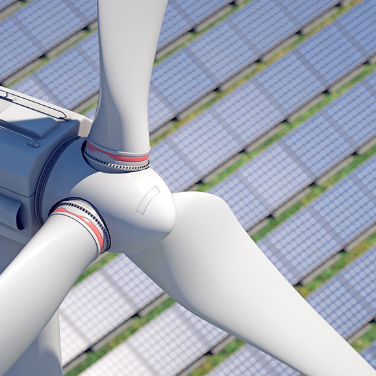A New Commitment to Renewable Energy
By Kylie Wolfe
States across the Midwest are leading the quest for renewable energy in America. After Texas and Iowa, Oklahoma is the third largest producer of wind energy in the United States. Its open landscapes are home to over a dozen wind farms, one of which is helping Thermo Fisher Scientific reach critical sustainability milestones.
In September 2022, Thermo Fisher furthered its commitment to renewable energy, purchasing a 90-megawatt portion of the Seven Cowboy wind project in western Oklahoma. This step supports the company’s long-term plan to reduce emissions.
Harnessing Wind in Western Oklahoma
Managed by Enel Green Power, the Seven Cowboy wind project is comprised of 107 wind turbines that are expected to generate roughly 1.3 terawatt hours of energy each year. This amount of power could keep over 120,000 US households running and at least 758,000 tons of CO2 emissions out of the atmosphere.
Thermo Fisher, through an eight-year virtual power purchasing agreement (VPPA), secured 90 megawatts of the overall system. This equates to 400,000 megawatt hours of renewable electricity each year, half of the company’s electricity usage in the U.S.
“If we were to take every site and cover every roof, parking lot, and adjacent property with solar panels or wind turbines, we still wouldn't be able to match the total combined electricity used across the organization. These VPPAs, or off-site projects, give us that flexibility and the ability to fundamentally address our Scope 2 emissions at the scale that we're actually producing them,” said Scott Self, director of procurement at Thermo Fisher.
"In September 2022, Thermo Fisher furthered its commitment to renewable energy."
An Important Step Forward
The U.S. Environmental Protection Agency has different classifications for emissions. Scope 1 emissions are defined as “direct greenhouse (GHG) emissions that occur from sources that are controlled or owned by an organization.” Scope 2 emissions are those that result from the purchase of utilities like electricity. These are operational emissions associated with buildings and on-site manufacturing efforts. Scope 3 emissions are indirect and associated with the supply chain, often the largest sources of emissions.
In 2021, Thermo Fisher joined the Business Ambition for 1.5°C campaign—led by the Science Based Targets initiative—and committed to net-zero emissions by 2050. This included reducing Scope 1 and 2 emissions by 30 percent compared to 2018 values. This goal was recently increased to 50 percent.
The Seven Cowboy wind project helps address Scope 2 emissions by generating renewable energy credits. It's those credits that are used to match emissions from sites across the country. By improving Scope 2 emissions, Thermo Fisher is not only supporting clean energy but also helping customers meet their Scope 3 reduction targets. That’s because a company’s Scope 1 and 2 emissions contribute to their customer’s Scope 3 emissions.
“When you think about the relationships between us and our customers and even us and our suppliers, it's like links in a chain that all support each other,” said Self.
The project is expected to be operational in the second half of 2023.
Plans for a Sustainable Future
Today, Thermo Fisher has more than 60 sites around the world that exclusively use renewable electricity. All sites in Germany and Italy fall into this category, relying on sources like the Seven Cowboy project. Some sites also have their own solar panels and wind turbines, generating electricity physically on site. In Cork, Ireland, a wind turbine helps match a lot of the emissions at the facility.
Self says that the company is looking to expand on-site solar initiatives wherever possible. Over 20 projects are currently in development, including two physical installations at Massachusetts-based sites. His team is also looking to remove equipment that uses fossil fuels. By taking steps to add renewable systems on site and leverage long-term power purchasing agreements, Thermo Fisher is making strides toward a more sustainable future.
Kylie Wolfe is a Thermo Fisher Scientific staff writer.
